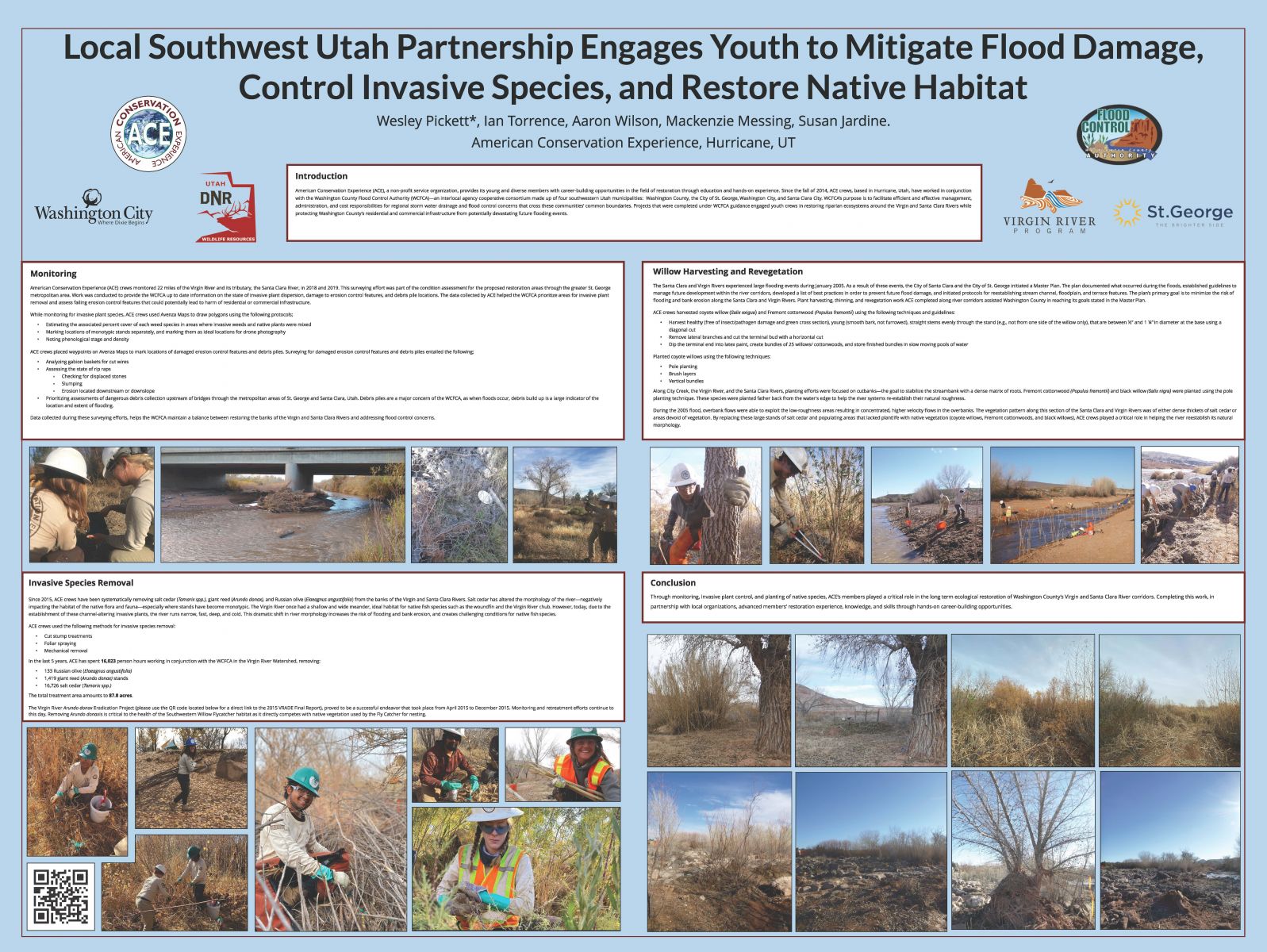Local Southwest Utah Partnership Engages Youth to Mitigate Flood Damage, Control Invasive Species, and Restore Native Habitat
Wesley Pickett1*, Ian Torrence2, Aaron Wilson3
1American Conservation Experience, Hurricane, UT, USA; wpickett@usaconservation.org
2American Conservation Experience, Flagstaff, AZ, USA; itorrence@usaconservation.org
3American Conservation Experience, Hurricane, UT, USA; awilson@usaconservation.org
American Conservation Experience (ACE), a non-profit service organization, provides its young and diverse members with career-building opportunities in the field of restoration through education and hands-on experience. Facilitation of member growth comes partly through the organization's commitment to partners with like-minded federal, state, local, and non-profit land agencies and organizations that assist with member guidance and mentorship. Since the fall of 2014, ACE crews, based out of Hurricane, Utah, worked in conjunction with the Washington County Flood Control Authority (WCFCA). In August of 2012 Washington County, the City of St. George, Washington City, and Santa Clara City entered into an inter-local agency cooperative agreement establishing the Washington County Flood Control Authority. The purpose of the Flood Control Authority (FCA) is to better share management, administration, and cost responsibilities for regional stormwater drainage and flood control concerns that cross common community boundaries. Projects that were completed under WCFCA guidance engaged youth crews in restoring riparian ecosystems around the Virgin and Santa Clara Rivers while protecting residential and commercial infrastructure in Washington County from potentially future devastating flooding events.
Crews surveyed for salt cedar (Tamarix spp.), Russian olive (Elaeagnus angustifolia), giant reed (Arundo donax), flood debris piles, and damaged infrastructure (like gabion baskets and bridges). This work provided the WCFCA data on areas of infrastructural concern and highlighted priority areas for invasive species removal. ACE crews controlled salt cedar, Russian olive, and giant reed along the riparian corridors of the Virgin and Santa Clara Rivers by mechanical and chemical means. Additionally, along the Santa Clara River, ACE crews revegetated with native plant species in an area that was once clogged with vegetation and beaver dams and was previously at risk for flooding during high water events.
Through monitoring, invasive plant control, and planting native species, ACE’s members played a critical role in the long term ecological restoration in Washington County’s Virgin and Santa Clara River corridors. Completing this work, in partnership with a local organization, advanced members’ restoration experience, knowledge, and skills through hands-on career-building opportunities. This poster will demonstrate how meaningful partnerships provide youth from diverse backgrounds the opportunity to engage in successful restoration projects and connect invasive plant management in a wilderness setting to an urban landscape.

